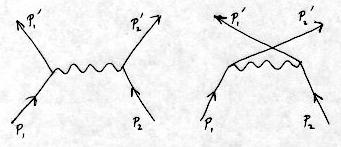

As with skew detection, there has been a great industry involved in publishing papers on methods for thinning connected components in 1 bpp images. The reason is simple: there are a great many ways to do it! Most involve an iterative process where a subset of boundary pixels is removed at each interation, and the subset is determined from the result of hit-miss pattern matching. The smallest hit-miss Sels that have been used are 3x3, and there are a very large number that can be used. I made an attempt in 1991 to examine these 3x3 Sels systematically, and to determine how they can be applied in combination to produce smooth (non-dendritic) skeletons that do not have significant erosion of free ends. That paper is Connectivity-preserving morphological image transformations, and it was published in SPIE Visual Communications and Image Processing, Conference 1606, pp. 320-334, November 1991, Boston, MA. A web version is also available: www.leptonica.com/papers/conn.pdf.
All the 3x3 hit-miss Sels that satisfy what I've called "strong connectivity preservation" have been extracted from this paper and placed in ccthin.c. There you'll find three functions, all of which are iterative and which have, in general, both parallel and sequential parts within each iteration:
All of these functions have a parallel operation that takes the union of the hit-miss operations from a set of Sels, and subtracts this from the image. In each iteration, this is done sequentially for four successive clockwise 90 degree rotations of the Sels. Thus, for example, for 8 connected thinning in pixThin(), there are four Sels, and a total of 16 hit-miss operations are required for each iteration.
Thickening the fg is equivalent to thinning the bg, using opposite connectivity. For example, to thicken the fg while maintaining 4-connectivity, we invert the image (swap fg and bg), thin the resulting fg using Sels that preserve 8-connectivity, and finally invert the result. All functions take a parameter that specifies whether we are thinning the fg or the bg.
There are two programs, prog/ccthin1_reg and prog/ccthin2_reg, that test these functions and display both the 3x3 Sels and the results.
For further information, refer to the paper above and, as
always, to the source code.
